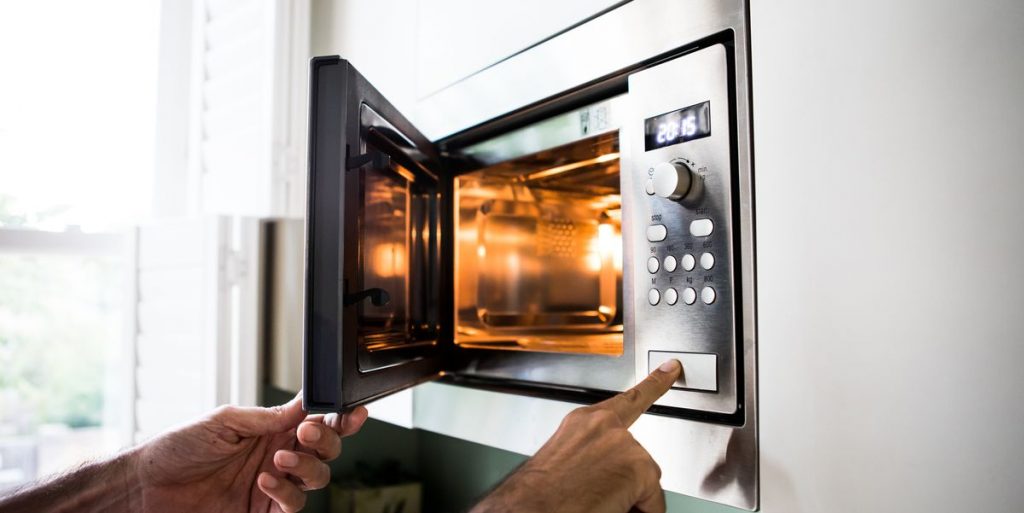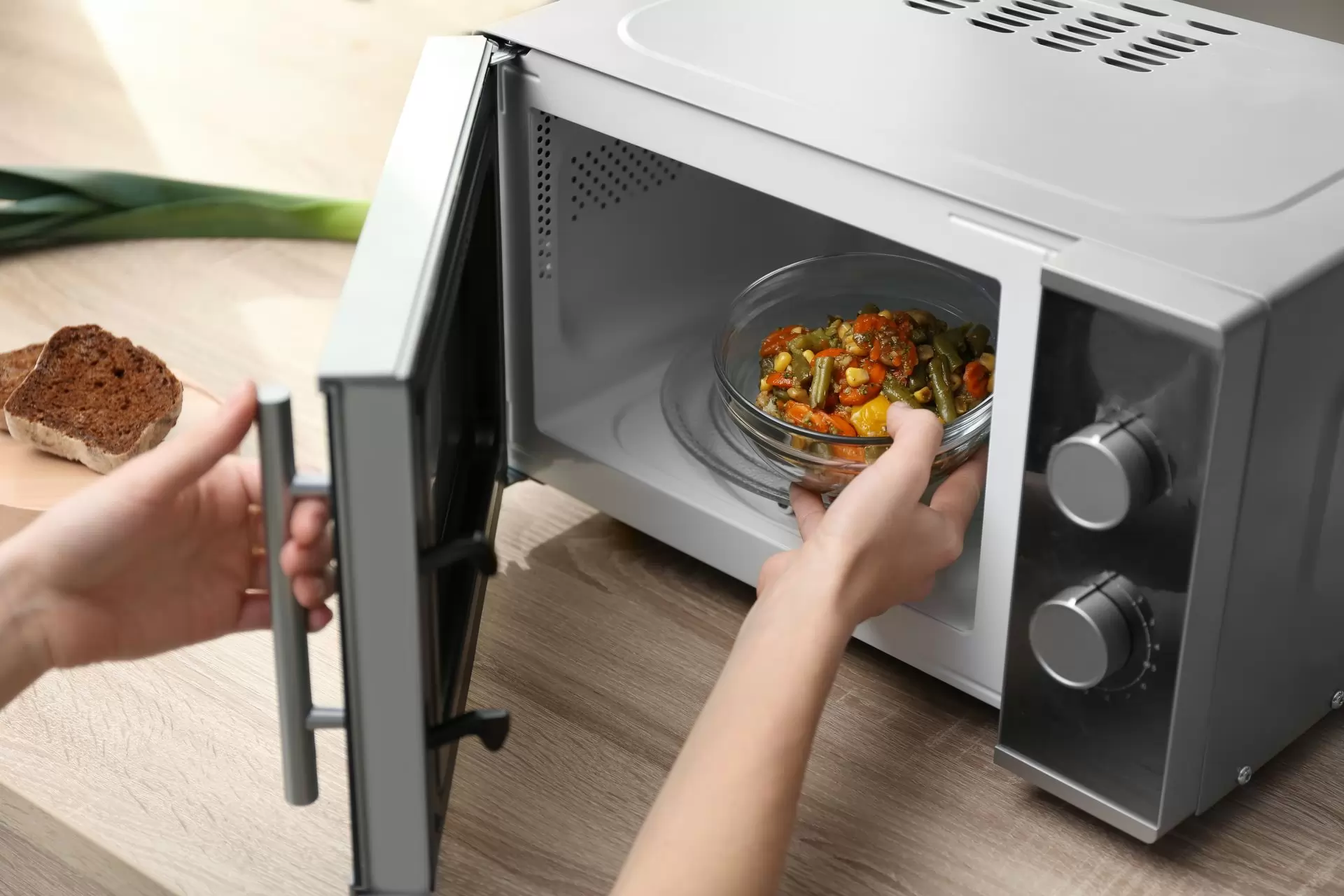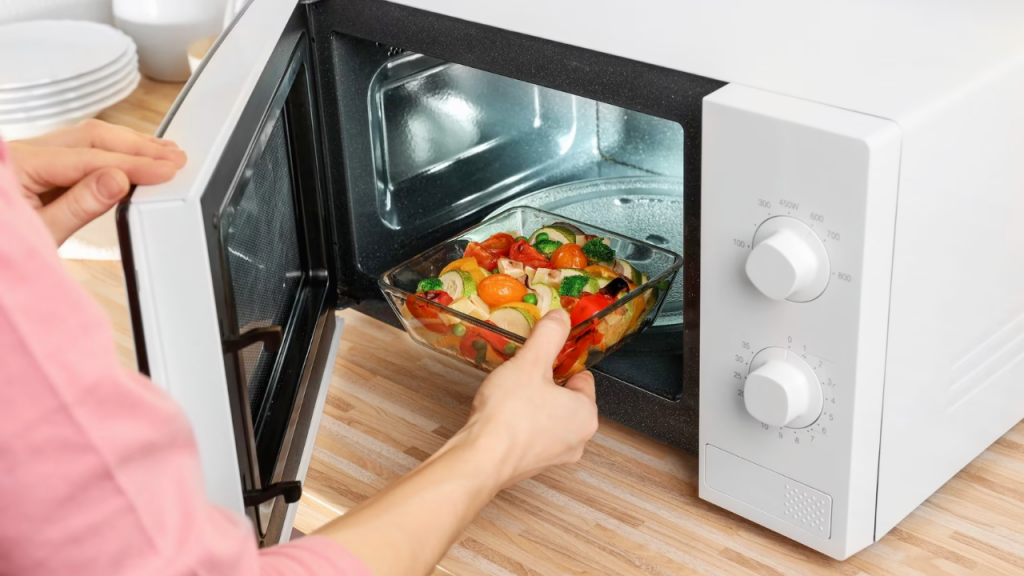In the hustle and bustle of daily life, the convenience of a microwave oven can be a game-changer. Whether you’re pressed for time or simply want a break from the traditional stovetop, microwave cooking offers a quick and efficient solution. With a few handy tips, you can transform your microwave into a versatile kitchen companion.
Microwave basics
Microwaves are like kitchen magicians, using short radio waves to make water, sugar, and fat molecules in your food dance and heat up. These waves penetrate only about 4-5 cm into your food. If it’s thicker, the rest cooks through heat transfer. There’s a “standing time” in recipes to let the heat finish the job thoroughly.

Choosing the right cookware
Not all dishes are microwave-friendly, so opt for heat-resistant glass like Pyrex, Anchor Hocking, or Corning Ware. Glass and porcelain are safe choices too. Steer clear of metal; it can lead to kitchen disasters! Plastic containers like margarine or yoghurt tubs aren’t the best either. It is also best not to heat baby bottles or closed containers that might crack or explode.
Microwave-friendly foods
- Scrambled or whole eggs
- Porridge/oatmeal
- Fish, chicken, and tender meats
- Vegetables: fresh, canned, or frozen
- Layered casseroles and hot dips
- Popcorn
- Apple crumble and other desserts
Cooking techniques and tips
- Start small: Microwave cooking can be speedy. Always begin with the shortest suggested time and adjust as needed to avoid overcooking.
- Cover up: Use microwave-safe lids, or get creative with alternatives like wax paper, parchment paper, or a damp paper towel.
- Stir it: Midway through cooking, give your food a stir for even heating. Round dishes work best to avoid overcooking in corners.
- Mind your meats: Tender cuts of meat and fish shine in the microwave. Avoid cooking whole chickens or big cuts of beef – it’s too much for the microwave to handle.
- Piercing for perfect eggs: Pierce yolks before microwaving eggs, and never try to cook an egg in the shell; it’s a recipe for a messy explosion.
- Metal-free zone: Never use metal in the microwave – it can lead to fires. If in doubt, keep it out.
- Time management: Separate foods by cooking time to ensure everything heats up perfectly.
- Chop it up: Cut larger foods into smaller portions for faster and more even cooking.
- Arrangement matters: Arrange food evenly on a microwave-safe surface for optimal results.
- Cover up: Use cling film to cover dishes with liquids and prevent messy explosions.
- Avoid overfilling: Leave room for bubbling liquids by not overfilling your container.
- Easy clean-up: Place a slice of lemon in water and microwave for 30 seconds to loosen stains or residue.
- Stir it up: Stir food regularly for even heat distribution.
- Patience: Let microwaved food stand for a minute after cooking; it continues to cook a bit.

Thawing frozen food
- Remove food from the original packaging before microwaving.
- Use the defrost setting for better results.
- Rotate and turn food during defrosting for even thawing.
- Cook immediately after defrosting to prevent bacterial growth.
ALSO SEE: Understanding the differences between fermenting and pickling
Understanding the differences between fermenting & pickling
Feature image: Pexels

